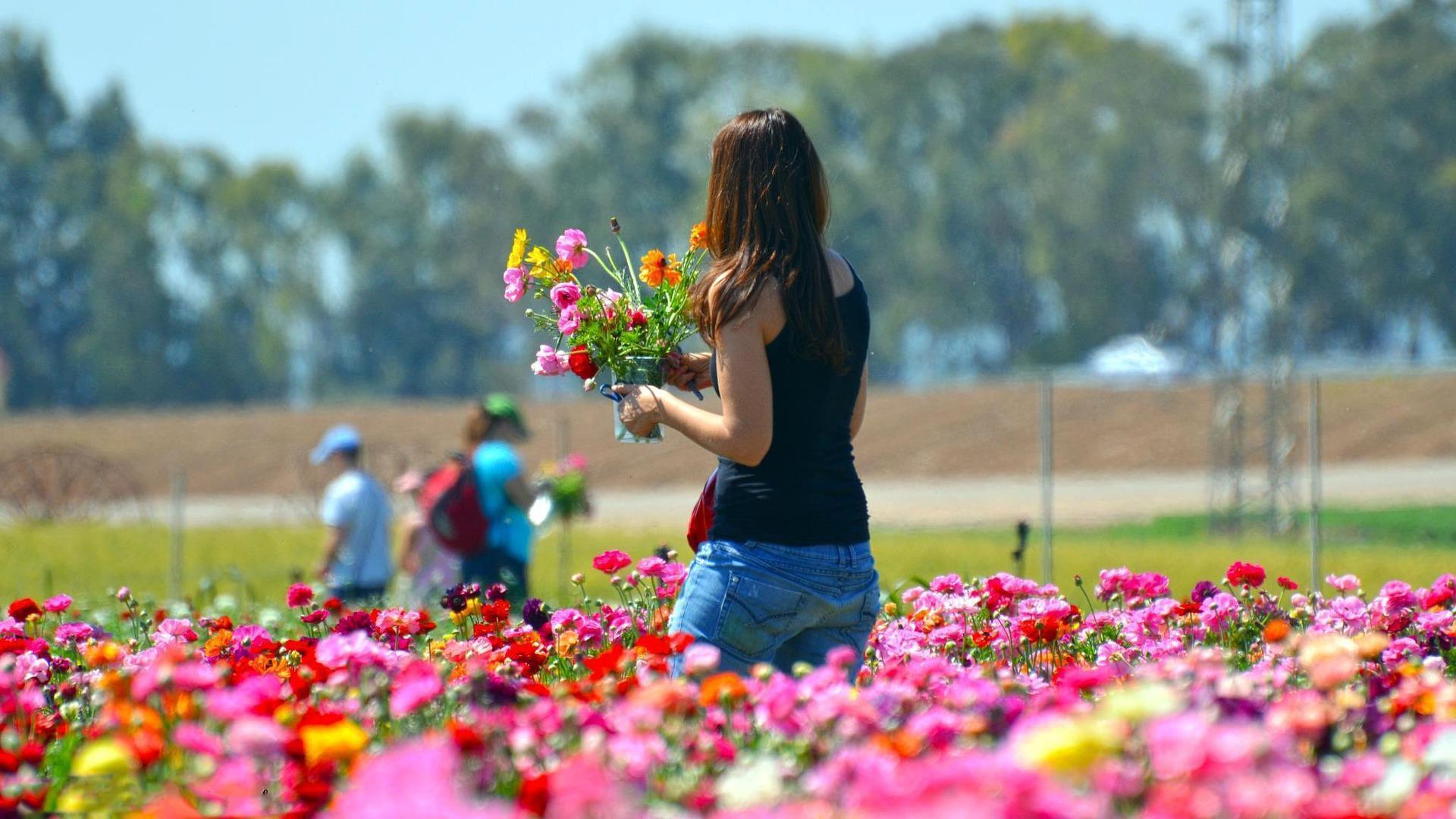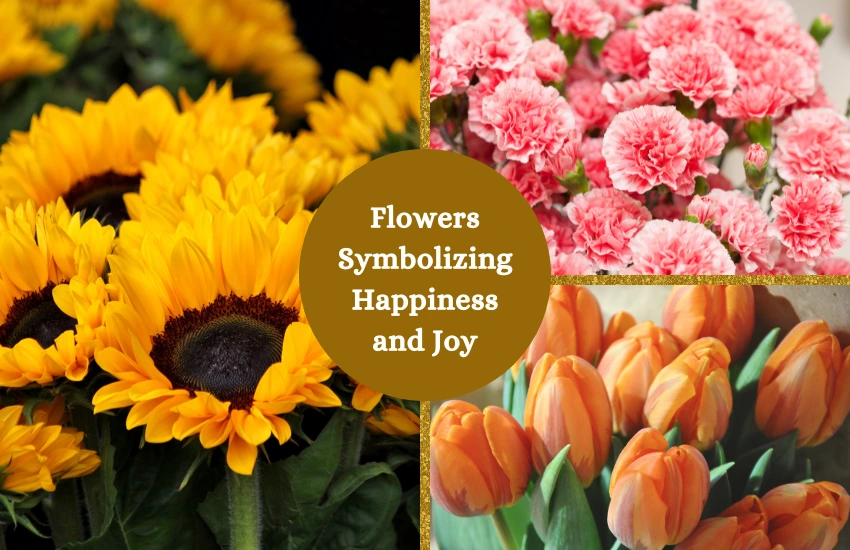The Simple Joy: A Guide to Responsible and Rewarding Flower Picking

Flower picking, a seemingly simple act, holds a profound connection to nature. It’s an opportunity to slow down, appreciate the delicate beauty around us, and bring a touch of the wild indoors. However, this seemingly harmless activity requires a degree of responsibility and awareness to ensure we’re not negatively impacting the environment we enjoy. This article explores the art and ethics of flower picking, providing a comprehensive guide to enjoying this rewarding pastime while minimizing our footprint.
The Allure of the Wild Bouquet:
The human attraction to flowers is ancient and universal. They symbolize beauty, love, and joy, and their vibrant colors and delicate forms have captivated us for millennia. Bringing flowers indoors connects us to the natural world, offering a respite from the often-sterile environments of our homes and offices. A wild bouquet, hand-picked and arranged with care, is more than just decoration; it’s a tangible representation of the beauty and resilience of nature.
Beyond the aesthetic appeal, flower picking can be a meditative and mindful activity. The act of carefully selecting blooms, appreciating their intricate details, and considering their placement in a bouquet can be incredibly grounding and therapeutic. It encourages us to be present in the moment, fostering a deeper connection with the natural world.
Ethical Considerations: Picking with Respect:
While the allure of a wild bouquet is undeniable, it’s crucial to approach flower picking with a deep sense of responsibility. Unregulated harvesting can have detrimental effects on plant populations, ecosystems, and the overall biodiversity of an area. Here are some key ethical considerations to keep in mind:
Know the Laws and Regulations: Before you even think about picking a single flower, familiarize yourself with the local laws and regulations regarding plant harvesting. Many parks, nature reserves, and private lands prohibit flower picking altogether. Ignorance is not an excuse, and violating these regulations can result in fines or even legal action. Research the specific rules for the area you plan to visit and adhere to them strictly.
Avoid Endangered or Protected Species: This is perhaps the most crucial aspect of responsible flower picking. Educate yourself about the local flora and fauna, paying particular attention to endangered, threatened, or protected species. These plants are often vulnerable and require protection to ensure their survival. Never, under any circumstances, pick these flowers. Many online resources and field guides can help you identify protected species in your area.
Pick Sparingly: Even if a flower is not protected, it’s essential to pick sparingly. Take only what you need and leave the majority of the plants undisturbed. A general rule of thumb is to never take more than one-third of the flowers from a single plant or area. This allows the plant to continue reproducing and provides sustenance for pollinators.

Consider the Impact on Wildlife: Flowers provide vital food and habitat for a variety of wildlife, including bees, butterflies, hummingbirds, and other pollinators. Picking flowers can deprive these creatures of essential resources, especially during critical periods like breeding season. Be mindful of the potential impact on wildlife and avoid picking flowers in areas where pollinators are actively foraging.

Avoid Trampling Vegetation: When walking through natural areas, be careful not to trample vegetation. Stick to established trails whenever possible and avoid stepping on delicate plants. Trampling can damage plants and disrupt the soil, making it difficult for them to thrive.
Respect Private Property: Never pick flowers on private property without the owner’s explicit permission. Even if a field appears unattended, it may still be owned by someone who does not want their plants harvested. Always seek permission before picking flowers on private land.
Leave No Trace: Practice the principles of "Leave No Trace" by packing out everything you pack in, including any trash or discarded flower stems. Avoid disturbing the natural environment and leave the area as you found it.

The Art of Selective Picking:
Beyond ethical considerations, the art of flower picking involves carefully selecting blooms that are both beautiful and sustainable to harvest. Here are some tips for choosing the right flowers:
Choose Flowers in Abundance: Focus on picking flowers that are abundant and widespread in the area. This minimizes the impact on individual plants and ensures that the population as a whole remains healthy.
Select Flowers in Various Stages of Bloom: Choose a mix of flowers in different stages of bloom, from buds to fully opened blossoms. This will create a more visually interesting bouquet and ensure that the flowers last longer.
Prioritize Flowers with Long Stems: Flowers with long stems are easier to arrange and will last longer in a vase. Look for flowers with sturdy stems that are free from damage or disease.
Avoid Picking Flowers That are Wilting or Damaged: Flowers that are already wilting or damaged will not last long and are best left in the field. Focus on picking flowers that are fresh and vibrant.
Cut Stems Cleanly: Use sharp scissors or pruning shears to cut the stems cleanly at an angle. This will allow the flowers to absorb water more easily and prolong their lifespan.
Extending the Life of Your Wild Bouquet:
Once you’ve carefully selected and harvested your flowers, it’s important to take steps to extend their lifespan. Here are some tips for keeping your wild bouquet fresh and vibrant:
Condition the Flowers Immediately: As soon as you get home, remove any leaves that will be submerged in water. This will prevent bacteria from growing and prolong the life of the flowers.
Re-Cut the Stems: Re-cut the stems at an angle under running water. This will remove any air bubbles that may have formed and allow the flowers to absorb water more easily.
Use a Clean Vase: Choose a clean vase and fill it with fresh, cool water. Add a floral preservative to the water to help nourish the flowers and inhibit bacterial growth.
Change the Water Regularly: Change the water in the vase every day or two. This will help keep the flowers fresh and prevent bacterial growth.
Keep Flowers Away from Direct Sunlight and Heat: Direct sunlight and heat can cause flowers to wilt and fade quickly. Keep your bouquet in a cool, shady location away from heat sources.
Consider Adding a Penny: The copper in a penny acts as an acidifier and can help prevent bacterial growth in the water.
Beyond the Bouquet: Sustainable Alternatives:
If you’re concerned about the environmental impact of flower picking, there are several sustainable alternatives you can consider:
Grow Your Own Flowers: The most sustainable way to enjoy fresh flowers is to grow your own. Plant a variety of native wildflowers in your garden and enjoy the beauty of nature without impacting wild populations.
Buy Flowers from Local Farmers: Support local farmers by buying flowers from farmers’ markets or roadside stands. This reduces the carbon footprint associated with transporting flowers from distant locations.
Choose Flowers from Sustainable Farms: Look for flowers that are grown on sustainable farms that use environmentally friendly practices. These farms often use organic methods and minimize their impact on the environment.
Admire Flowers in Their Natural Habitat: Sometimes, the best way to appreciate flowers is to simply admire them in their natural habitat. Take a walk in the woods or a stroll through a meadow and enjoy the beauty of nature without picking a single flower.
Flower Picking FAQ:
Is flower picking always bad for the environment?
No, responsible flower picking can be done sustainably. The key is to be mindful of the ethical considerations outlined in this article.How can I identify protected species?
Consult local field guides, online resources, and park rangers to learn about the protected species in your area.What should I do if I accidentally pick a protected flower?
Carefully return the flower to its original location and avoid picking any more flowers in that area.Can I pick flowers in my own backyard?
Yes, you can generally pick flowers in your own backyard, provided they are not protected species and you are not violating any local ordinances.What is the best time of day to pick flowers?
The best time to pick flowers is in the early morning, after the dew has dried but before the sun gets too hot.How can I dispose of my flowers responsibly?
Compost your flowers or dispose of them in a yard waste bin. Avoid throwing them in the trash, as this contributes to landfill waste.
Conclusion: A Blossoming Relationship with Nature
Flower picking, when practiced responsibly, can be a rewarding and enriching experience. It allows us to connect with nature, appreciate the beauty of the natural world, and bring a touch of the wild into our homes. By following the ethical guidelines outlined in this article, we can ensure that our enjoyment of flowers does not come at the expense of the environment. Let’s strive to cultivate a blossoming relationship with nature, one that is based on respect, responsibility, and a deep appreciation for the delicate balance of our ecosystems. Remember, the most beautiful bouquet is one that is picked with care, respect, and a genuine love for the natural world. So, go forth, explore, and appreciate the beauty that surrounds you, but always do so with a mindful heart and a gentle hand. The future of our wildflowers depends on it.


